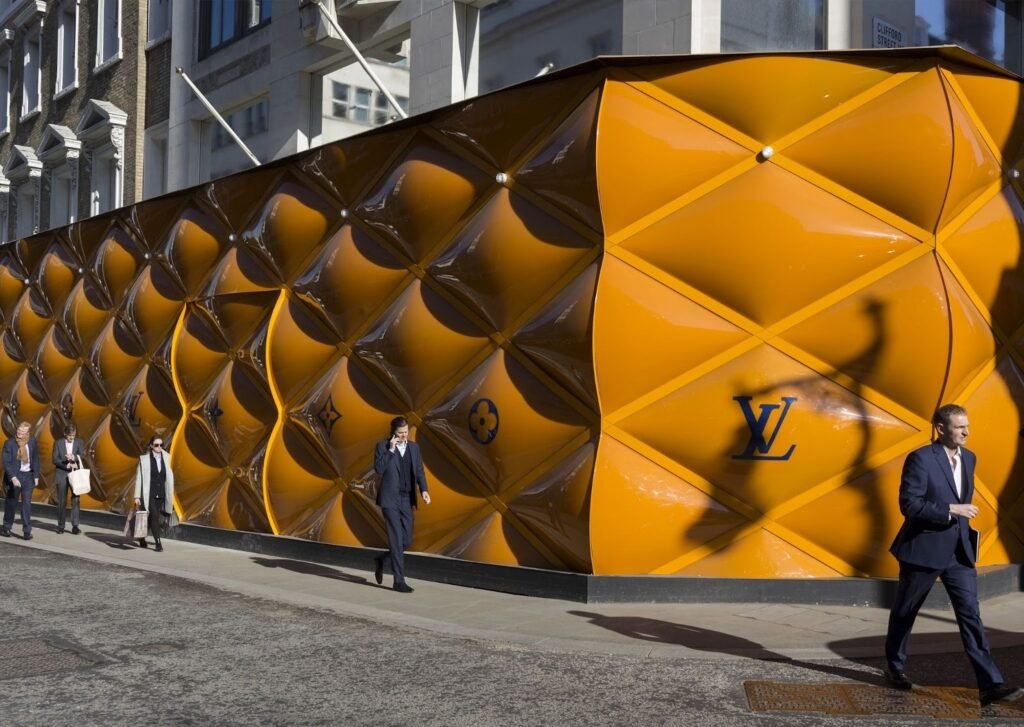
Urban advertising has changed significantly in the last several years, as more creative, sustainable, and interactive approaches have progressively replaced the traditional techniques of billboards and posters. Growing worries about the effect on the environment and the need for dynamic, captivating advertising experiences are driving this forward-thinking development rather than just a response to shifting trends. The most noteworthy innovations in this field are hoardings, which are big, often lighted advertising structures that have been repurposed as instruments for interaction and environmental sustainability. Technology and environmental conscience have come together to produce a new paradigm in which advertising aims to provide urban inhabitants with a richer, more immersive experience while simultaneously reducing its carbon impact.
The Need to Protect the Environment: Eco-Friendly Materials and Storage Methods
Large, lit hoardings in particular have drawn criticism for their negative environmental effects as cities grow and urban areas become more populated. The concept and implementation of hoardings are changing as a result of the increasing need for sustainable materials and methods. These days, eco-friendly products that cut down on waste and energy use, such as solar-powered lights, recycled plastics, and biodegradable vinyl, are given priority by marketers and urban planners. Additionally, there is a chance to decrease the requirement for physical resources due to the advent of digital and interactive hoardings, which might save energy costs and paper waste. This rising trend towards sustainability is more than just a fad; it represents a fundamental change in how we see the function of advertising in our communities.
Urban Advertising Interactivity: Activating Audiences Instantaneously
The growing interactivity of hoardings is one of the most fascinating trends in urban advertising. Interactive advertising fosters a lively conversation between the brand and the customer, as opposed to static, one-way communication techniques. Using touch, motion detection, and even augmented reality (AR), digital displays built into hoardings let onlookers engage with the material. Because it creates a feeling of connection with the viewer, this invention has the potential to completely transform the advertising sector. People may now interact directly with the material instead of passively absorbing it, whether by selecting alternative photos, taking part in live polls, or entering an immersive augmented reality environment that immerses them in a brand’s story. In a time when customers want more individualised and memorable experiences, this real-time contact is especially potent.
Technology Integration: Data Analytics and Smart Hoardings
Apart from interactivity, another noteworthy advancement that is transforming the future of urban advertising is the incorporation of smart technology into hoardings. Hoardings are becoming dynamic, intelligent elements of the urban environment rather than passive constructions because to the development of Internet of Things (IoT) devices and advanced data analytics. In order to provide hyper-relevant and time-sensitive material, these smart hoardings can gather and analyse data from the surrounding environment, such as foot traffic, weather trends, and demographic data. A hoarding may, for instance, alter its message according to the weather, promoting umbrellas in the rain or cool refreshments on a hot day. This degree of reactivity, which is powered by real-time data, greatly improves the advertisement’s relevancy and makes it far more powerful than static advertising.
The Advantages of Interactive and Sustainable Urban Advertising
Both marketers and the metropolitan settings where these hoardings are erected stand to gain much from the integration of sustainability and interactivity. Better memory, more brand affinity, and eventually higher conversion rates are the outcomes of marketers’ ability to reach a more engaged audience with interactive content. Regarding the environment, energy-efficient technology and sustainable materials assist businesses meet the increasing customer demand for eco-conscious business practices and corporate responsibility by lowering the carbon footprint of advertising campaigns. Furthermore, interactive hoardings help achieve the larger sustainability objectives of urban development by cutting waste and optimising energy use, establishing cities as progressive, accountable places. Therefore, the mutually beneficial relationship between sustainability and interaction improves advertising effectiveness while also helping society at large.
Overcoming the Obstacles: Juggling Creativity and Realism
Even if interactive and sustainable hoardings have a lot of promise, there are a lot of obstacles to take into account. It may be expensive to integrate cutting-edge technology like IoT devices, augmented reality, and data analytics, especially for smaller businesses and marketers. Furthermore, a specific skill set is needed for the technical complexity of installing and maintaining these state-of-the-art systems, which may restrict the availability of knowledge in certain areas. It’s also crucial to make sure that these advancements don’t overpower or clog the urban environment. Digital material and interaction may be captivating, but too much of it can pollute the visual environment, making cities less aesthetically pleasing and perhaps distracting drivers and pedestrians. Maintaining advertising’s innovativeness and environmental harmony in the future will require striking the correct balance between urban planning and technology innovation.
Improving Urban Beauty with Interactive Marketing
Although hoardings have historically been seen as components of urban litter, their aesthetic value has started to rise with the use of sustainable materials and cutting-edge technology. It is now possible to create these advertising buildings that mix in perfectly with the surrounding architectural splendour and urban surroundings. Advertisers may design eye-catching, aesthetically pleasing displays that are not only useful but also enhance a city’s overall attractiveness with the use of digital screens, solar panels, and environmentally friendly materials. By giving onlookers rich, captivating experiences that turn ordinary advertising into art, interactive features like augmented reality may further improve the visual appeal. The future of hoardings depends on their capacity to draw attention and enhance the urban beauty as cities become more aware of their visual surroundings.
Conclusion:
Hoardings are at the front of this shift, which will see urban advertising embrace sustainability and interactivity in the future. These buildings are now more than just places to advertise; they are part of a larger initiative to make cities more interesting, connected, and environmentally conscious. The advertising sector will have to change to provide more individualised, relevant, and sustainable solutions as technology develops and customer expectations change. With this development, urban advertising has the power to completely change our perception of cities by fusing technology, business, and environmental consciousness into a single, progressive entity.




